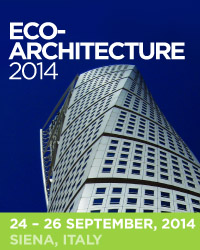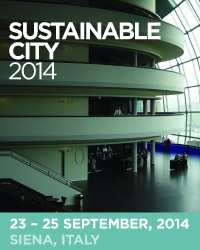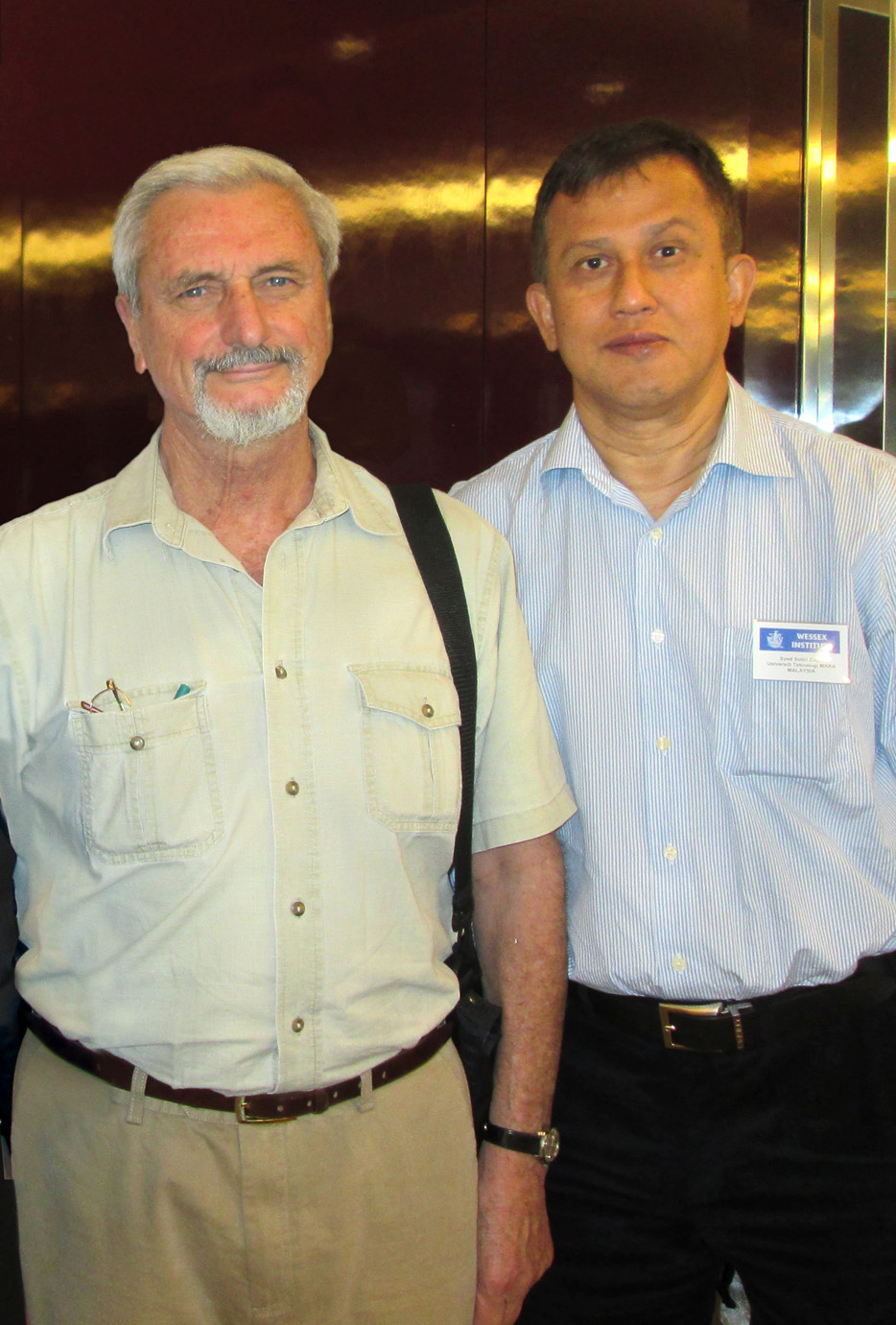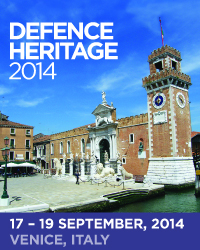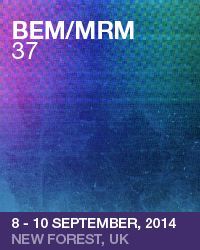Overview
The 5th International Conference on Harmonisation between Architecture and Nature (Eco-Architecture 2014) took place in the Certosa di Pontignano, organised by the University of Siena, represented by Prof Riccardo Pulselli, and the Wessex Institute of Technology, represented by Prof Carlos A Brebbia. It follows from a series of successful meetings which started in 2006 in the New Forest, home of the Wessex Institute of Technology, and continued in the Algarve (2008), La Coruña (2010) and the island of Kos (2012).
The choice of the University of Siena as a venue was determined by the work carried out by the Ecodynamics Group, where Riccardo Pulselli carries out his research. The Group, started by the late Professor Enzo Tiezzi, has a well-deserved international reputation.
A few years ago, Enzo Tiezzi, then professor at the University of Siena, asked his students “What do you think the most sustainable building is?” There were many answers as it is easy to cite hundreds of prime examples from contemporary architecture. After listening to many answers, Enzo produced his own, ie “The most sustainable building is the one that already exists”. Enzo wanted to point out that the most sustainable architecture is the result of an evolution, a progressive adaptation of structures to environments and adjustments to new needs. The sustainable city is not a city full of new buildings, but rather the same city of the past, renovated, repaired and modified in order to be lived in as fully today as it was in the past.
Enzo’s answer in its simplicity encompassed the objectives of the Eco-Architecture 2014 conference, that the design process should aim for optimum solutions, evolving through the adaptation of architecture to its natural environment, learning from nature and by time honoured traditional construction methodologies.
Prof Carlos A Brebbia opened the conference explaining the importance of this meeting series for the Wessex Institute of Technology, which sees itself as a medium for the International transfer of knowledge. This is also carried out through a large number of publications, including journals and books, other than those resulting from the conferences.
The book corresponding to this conference is Volume 142 of WIT Transactions on the Built Environment, and is widely disseminated in digital, as well as hard copy format. Furthermore, the papers are permanently archived in the digital library of the Institute (www.witpress.com/elibrary), where they are available to the international scientific community. These mechanisms ensure the maximum dissemination to the work presented at the Wessex Institute conferences.
The Wessex Institute’s main strength however – Carlos explained – is in the field of research and development of advanced simulation tools. At present, a considerable amount of work is focussed on petroleum and aerospace industries applications. The tools however are of a very general character and can be applied across a wide variety of disciplines. Modules developed by WIT have been applied in acoustics, electrical and electromagnetic engineering, heat transfer, biomechanics and many other fields. In certain ways this versatility set up the basis for the work of WIT across different disciplines, including its conferences and publications.
Riccardo Pulselli welcomed the delegates afterwards, and explained the work of the Ecodynamics Group and the importance of the research in ecological problems carried out at the University of Siena. The city of Siena itself and its surrounding province has become a byword for sustainability.
Riccardo referred to the importance of their work that has now achieved international recognition.
The Conference sessions took place in La Certosa di Pontignano, an old monastery belonging to the University of Siena and now converted into a conference centre. It was founded in the 1300s by the Carthusian Order. It is still an oasis of peace, most appropriate for research meetings presented near Siena while being in the open countryside, and offers unique views of its surroundings. Vineyards and olive groves surround La Certosa.
The complex has two beautiful cloisters and a series of cells, rooms and facilities around them. In spite of the many changes that the buildings undertook over the years, the complex is harmonious and its architecture blends with the surrounding landscape.
Conference Sessions
The papers presented at the meeting covered a wide range of items related to Eco-Architecture, they were grouped in the following sessions:- Bioclimatic design
- Energy efficiency
- Ecological and cultural sensitivity
- Ecological impacts of materials
- Design with nature
- Building technologies
- Design by passive systems
- Heat transfer problems
- Case studies
- Education and training
- Life cycle assessment and durability
- Sustainability indices in architecture
- Adapted reuse
Invited Presentations
The conference sessions were enhanced by a series of invited presentations given by well-known colleagues:- “Generating a new typology of an urban village”, by Syed Zubir, Universiti Teknologi MARA, Malaysia.
- “Radiation-active surface design: the use of photocatalytic concrete enabling buildings to be active environmental remediators”, by Nik Nikolov, LeHigh University, USA.
- “Towards nZEB: modular pre-assembled steel systems for residential buildings”, by Danila Longo, University of Bologna, Italy.
- “Incorporation of bioclimatic conditions in architectural projects: a case study of the Solar Hemicycle building, Madrid, Spain”, by Elaine Garido Vazquez, Federal University of Rio de Janiero, Brazil.
Social Occasions
There were ample opportunities for the delegates to meet during the conference, not only during coffee breaks but also at lunches and other social functions. Many of them took the opportunity to visit the sights of Siena in small groups and enjoy the cuisine for which the city is renowned throughout the world.The Conference dinner took place in the unusual setting of one of the famous contradas of Siena. A contrada is the name given to a part of town, each of which has the right of having a horse racing for them in Il Palio, the race taking place around the Piazza del Campo.
The contrada is the centre of the social life of this particular part of town, and although opened to all classes it is in practice a highly exclusive club to which one can only belong if born in that part of town.
The contrada contributes to the strong community sense of Siena, a town renowned for its sustainability record and low carbon footprint. To serve in the contrada cities is an obligation and an honour, to which the community contributes on a voluntary basis.
The banquet was preceded by a visit to the Museum of the Contrada dell’Aquila, which contains the Palii (or banners) they won over the years and other historical memorabilia. Next door to the Museum a small chapel is used for the ceremony of blessing the horse and jockey before the race takes place.
The dinner consisted of appetizers, followed by two first courses of rice and pasta, and a main course of roasted veal, everything prepared in the Tuscan way. The food was accompanied by excellent Chianti wines.
The whole evening was most enjoyable and gave the delegates the chance to see a part of Siena life which is not open to most visitors. The invitation to the Contrada was the result of the academic contacts WIT has built with Siena, over many years of collaboration.
ISAC Dinner
Members of the International Scientific Advisory Committee (ISAC) and Editorial Board of the International Journal of Sustainable Development and Planning, met over dinner in one of the best restaurants in town, offering authentic Tuscan cuisine. The discussions centred on reconvening Eco-Architecture in 2016 and where and when the conference ought to take place.Carlos commented on the success of the Journal as well, the frequency of which has now increased to six issues per year. The Journal is in the main research databases, and paper citations are recorded. It may be necessary following the success of the topic to increase the number of issues. Carlos also mentioned that from now on all WIT Press publications are in full colour in paper as well as digital formats.
Closing of the Conference
The conference was closed by Carlos who thanked all the delegates for their participation and having contributed to another very successful meeting. He hoped that they will consider participating in other meetings, as well as the conference in 2016 and other WIT activities. He also hoped that they will consider visiting the WIT Campus in the New Forest next time they are in that region of England.Conference Proceedings
The proceedings of Eco-Architecture 2014 – Eco-Architecture V, 648pp (Print ISBN: 978-1-84564-822-0; eISBN: 978-1-84564-823-7) are available from WIT Press. Orders can be placed on the WIT Press web site at www.witpress.com or by email: marketing@witpress.com, telephone: +44 (0) 238 029 3223 or fax: +44 (0) 238 029 2853.Papers from the conference will also be hosted online at the WIT eLibrary as Volume 142 of WIT Transactions on the Built Environment (ISSN: 1746-4498, Digital ISSN 1743-3509). For more details visit the WIT eLibrary at www.witpress.com/elibrary
Related Conferences
- Sustainable City 2015
- Sustainable Development and Planning 2015
- STREMAH/2015
